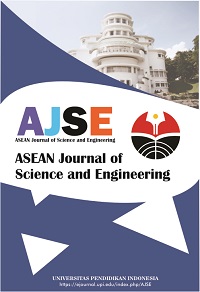Standardized Assessment of Compressive Behavior in Rigid Polyurethane Foams: Influence of Density, Crosslinking, and Aging
Abstract
Rigid polyurethane foams (RPUFs) are essential materials in structural applications due to their thermal insulation, lightweight properties, and mechanical strength. However, evaluating and comparing their compressive performance is complicated by differences in formulation parameters such as density, aging, and crosslink density. This study proposes a standardized normalization approach to evaluate compressive properties across diverse RPUF formulations by adjusting all data to a common reference density. Samples were subjected to controlled aging conditions and analyzed using dynamic mechanical thermal analysis (DMTA) to investigate the relationship between crosslinking behavior and mechanical performance. The results demonstrate that aging, formulation composition, and isocyanate index significantly influence the foam’s compressive strength and modulus, as well as its thermal transitions. The proposed method enables a more reliable and efficient comparison of RPUF performance, offering practical implications for optimizing formulation design in construction, automotive, and aerospace applications where mechanical integrity and durability are critical.
Keywords
Full Text:
PDFReferences
Nandiyanto, A.B.D., Ragadhita, R., and Fiandini, M. (2023). Interpretation of Fourier Transform Infrared Spectra (FTIR): A practical approach in the polymer/plastic thermal decomposition. Indonesian Journal of Science and Technology, 8(1), 113-126
Sridevi, V., Hamzah, H.T., Jweeg, M.J., Mohammed, M.N., Al-Zahiwat, M.M., Abdullah, T.A., and Abdullah, O.I. (2024). Microwave pyrolysis of agricultural and plastic wastes for production of hybrid biochar: Applications for greener environment. Indonesian Journal of Science and Technology, 9(3), 791-820.
Sarkingobir, Y., and Tukur, U. (2025). Plastic in water and its implications in human and biological systems. ASEAN Journal for Science and Engineering in Materials, 4(1), 1-12.
Samsuri, S., Anwar, S., Harini, S., Kartini, T., Monaya, N., Warizal, W., and Setiawan, A.B. (2025). Techno-economic feasibility and bibliometric literature review of integrated waste processing installations for sustainable plastic waste management. ASEAN Journal for Science and Engineering in Materials, 4(2), 225-244.
Cao, Z., Hao, Q., Xu, S., Han, X., Yi, J., and Sun, G. (2025). Preparation and performance evaluation of bio-based polyurethane modified asphalt binders: Towards greener and more sustainable asphalt modifier. Construction and Building Materials, 476, 141209.
Mohammed, A.J., Muhsen, M.C., and Ibrahim, I.K. (2023). Effect of additional natural filler waste on the mechanical properties of polyurethane polymer. ASEAN Journal for Science and Engineering in Materials, 2(2), 135-142.
Zhai, D., Sun, Q., Wang, Y., and Li, J. (2024). Microstructure and mechanical performance of polyurethane-fly ash composites (PU-FAC) under different effect factors. Case Studies in Construction Materials, 21, e03405.
Lu, P., He, C., Wang, J., Wu, Y., and Ding, J. (2025). Polyurethane-modified asphalt mechanism. Case Studies in Construction Materials, 22, e04247.
Sun, C., Bu, X., Yang, T., Qiao, C., Ji, X., Tao, F., and Liu, L. (2023). Degradable waterborne polyurethane with flame retardancy and high mechanical strength via synergy of hydrogen bonds. ACS Applied Polymer Materials, 5(7), 5360-5369.
Wang, S., Liu, W., Yang, D., and Qiu, X. (2019). Highly resilient lignin-containing polyurethane foam. Industrial & Engineering Chemistry Research, 58(1), 496–504.
Benavides, S., Armanasco, F., Cerrutti, P., and Chiacchiarelli, L. M. (2021). Nanostructured rigid polyurethane foams with improved specific thermo-mechanical properties using bacterial nanocellulose as a hard segment. Journal of Applied Polymer Science, 138(22), 50520.
Hu, Z.-Q., Shao, J.-L., and Chen, P.-W. (2024). The effect of silica nanoparticles on the shock adiabatic relation and tensile strength in polyurethane. Mechanics of Materials, 192, 104979.
Wei, W., Bi, Y., and Bi, G. (2023). Study of viscoelastic damage and micromechanism of polyurethane in freeze-thaw cycle environment. Case Studies in Construction Materials, 19, e02551.
Cortazar-Noguerol, J., Cortés, F., and Elejabarrieta, M. J. (2025). Influence of density of a polyurethane microcellular elastomer foam on its compressive energy absorption and time-dependent behavior. Journal of Materials Research and Technology, 34, 439–448.
Jung, H. C., Ryu, S. C., Kim, W. N., Lee, Y.-B., Choe, K. H., and Kim, S.-B. (2001). Properties of rigid polyurethane foams blown by HCFC 141B and distilled water. Journal of Applied Polymer Science, 81(2), 486–493.
Sarkari-Oskuei, E., Safavi-Mirmahalleh, S.-A., Sofla, R. L. M., Roghani-Mamaqani, H., and Salami-Kalajahi, M. (2023). Synthesis of recyclable polyurethane-based pseudo-vitrimer: Comparison of properties with conventional polyurethane. Journal of Polymer Research, 30(9), 338.
Harikrishnan, G., Patro, T. U., and Khakhar, D. V. (2006). Polyurethane foam–clay nanocomposites: Nanoclays as cell openers. Industrial & Engineering Chemistry Research, 45(21), 7126–7134.
Kantheti, S., Narayan, R., and Raju, K. V. S. N. (2014). Click chemistry engineered hyperbranched polyurethane–urea for functional coating applications. Industrial & Engineering Chemistry Research, 53(20), 8357–8365.
Su, Y., Tian, J., and Zhang, H. (2025). The role of compressive stress enhancement in the shear mechanism of nickel foam/polyurethane composites. Composites Part A: Applied Science and Manufacturing, 190, 108699.
Omrani, I., and Mohammadi Berenjegani, R. (2024). Chemical recycling of flexible polyurethane foam scraps using bio-based acidolysis agents. ACS Applied Polymer Materials, 6(17), 10698–10705.
Zhai, D., Sun, Q., Liu, Z., and Yue, X. (2025). Study on the pore characteristics of polyurethane-based repair materials. Construction and Building Materials, 483(7), 141058.
Huang, W., Xu, H., Fan, Z., Ao, Y., and Liu, J. (2020). Compressive response of composite ceramic particle-reinforced polyurethane foam. Polymer Testing, 87, 106514.
Xu, Z., Fan, Y., Tao, P., Wang, L., Wang, C., Guo, X., & Quan, Y. (2024). Multimethod recyclable thermoset polybutadiene polyurethane–urea via reversible disulfide bonds. ACS Applied Polymer Materials, 6(10), 6183-6191.
Pengfei, L., Jie, W., Zhilong, C., Jian, X., Song, L., Peng, W., and Zhiqing, Z. (2025). Degradation mechanism and performance of polyurethane mixture under water conditions. Construction and Building Materials, 490, 142467.
Yuan, H., Wang, Y., Liu, Z., and Li, S. (2019). A study on the properties and working mechanism of a waterborne polyurethane-modified silicate-based coating. RSC Advances, 9(46), 26817–26824.
Yang, F., Gao, H., Jiang, J., Wang, M., and Hu, G. (2023). Influence of microphase separation and crosslinking density on dynamic viscoelastic properties of nano-FeO modified polyurethane. Journal of Applied Polymer Science, 140(41), e54521.
Ma, P., Ma, L., Wang, M., Duan, L., Tan, Y., and Zhu, W. (2024). Compressive strength characteristics of polyurethane cemented sea sand. Case Studies in Construction Materials, 20, e03172.
Husainie, S. M., Khattak, S. U., Robinson, J., and Naguib, H. E. (2020). A comparative study on the mechanical properties of different natural fiber reinforced free-rise polyurethane foam composites. Industrial & Engineering Chemistry Research, 59(50), 21745–21755.
Soares, L. F., dos Santos, J. C., de Freitas, V. A. A., Pereira, R. B. D., Panzera, T. H., and Scarpa, F. (2024). Castor-oil biobased foam: The effect of the composition on the physical and mechanical properties via a statistical mixture design. RSC Sustainability, 2(4), 975–987.
Sajadian, Z., Zebarjad, S. M., and Bonyani, M. (2024). Thermal and mechanical properties of honeycomb sandwich panel of polyurethane nanocomposite reinforced with nanoclay. Journal of Polymer Research, 31(9), 284.
Akhtar, A. Y., and Tsang, H.-H. (2023). Dynamic properties of recycled polyurethane-coated rubber-soil mixtures. Case Studies in Construction Materials, 18, e01859.
Zhang, Q., Hu, X., Ma, H., Li, W., and Jin, X. (2024). Aging behavior of polyether polyurethane binder: Thermal-oxidative, photo-oxidative, hydrolytic aging, and microscale. Construction and Building Materials, 455, 139077.
Zhang, S., Wang, R., Du, Y., Liu, J., Hu, X., Xu, M., and Li, B. (2025). Inherently flame retardant and aging resistance rigid polyurethane foam by incorporating the synthesized polyhydroxy phosphonates. Composites Communications, 53, 102246.
Wang, L., Xiang, S., Ling, G., Ying, J., Zhou, J., and Yang, J. (2025). New modification strategy for thermoplastic polyurethane with high hygrothermal ageing resistance and flame retardancy. Polymer Degradation and Stability, 232, 111140.
Wang, L., O’Connor, D., Rinklebe, J., Ok, Y. S., Tsang, D. C., Shen, Z., and Hou, D. (2020). Biochar aging: mechanisms, physicochemical changes, assessment, and implications for field applications. Environmental Science & Technology, 54(23), 14797-14814.
Yarahmadi, N., Vega, A., and Jakubowicz, I. (2017). Accelerated ageing and degradation characteristics of rigid polyurethane foam. Polymer Degradation and Stability, 138, 192–200.
Malucelli, G. (2025). Flame retardant surface treatments for rigid polyurethane foams used in the building sector: Current state-of-the-art and perspectives. Construction and Building Materials, 472(4), 140947.
Davies, P., and Evrard, G. (2007). Accelerated ageing of polyurethanes for marine applications. Polymer Degradation and Stability, 92(8), 1455–1464.
Labouriau, A., Stockdale, J. R., Adhikari, S., Pacheco, A., Legett, S. A., Davis, J., and Torres, X. M. (2024). Suitability of aromatic polyurethanes for use in nuclear applications. Polymer Degradation and Stability, 228, 110920.
Campos, G. N., Coimbra, A. C. R., Silva, A. A. D., Rocha, E. B. D. D., Linhares, F. N., Furtado, C. R. G., and Sousa, A. M. F. D. (2022). Cross-link density measurement of nitrile rubber vulcanizates using dynamic shear test. Polímeros, 32, e2022011.
Chiou, B.-S., and Schoen, P. E. (2002). Effects of crosslinking on thermal and mechanical properties of polyurethanes. Journal of Applied Polymer Science, 83(1), 212–223.
Song, J., Wu, H., Niu, Y., Hui, B., Wang, Y., and Li, L. (2024). Modification of degradable polyurethane materials using L-tyrosine and its application. Journal of Polymer Research, 32(1), 15.
Kumar, R., Liu, D., and Zhang, L. (2008). Advances in proteinous biomaterials. Journal of Biobased Materials and Bioenergy, 2(1), 1-24.
Al-Moameri, H., Jaf, L., and Suppes, G. J. (2021). Simulation approaches for the mechanisms of thermoset polymerization reactions. Molecular Catalysis, 504, 111485.
Merillas, B., Lamy-Mendes, A., Villafañe, F., Durães, L., and Rodríguez-Pérez, M. Á. (2022). Polyurethane foam scaffold for silica aerogels: Effect of cell size on the mechanical properties and thermal insulation. Materials Today Chemistry, 26, 101257
Fu, Y., Qiu, C., Ni, L., Ye, H., Zou, H., Luo, Y., and Liang, M. (2024). Cell structure control and performance of rigid polyurethane foam with lightweight, good mechanical, thermal insulation and sound insulation. Construction and Building Materials, 447, 138068.
Wang, H., Xie, S., Jing, K., Zheng, S., Liu, Z., and Zhou, H. (2025). Closed-cell polyurethane in-situ foaming honeycomb for enhanced energy absorption and water intrusion resistance. Alexandria Engineering Journal, 114, 572–587.
Singh, D., and Ohri, S. (1982). Effect of reactant ratio and temperature on the characteristics of phenol–formaldehyde foams. Journal of Applied Polymer Science, 27(4), 1191–1196.
Masi, P., Nicolais, L., Mazzola, M., Snial, and Narkis, M. (1983). Tensile properties of fiberglass-reinforced polyester foams. Journal of Applied Polymer Science, 28(4), 1517–1525.
Hoseinabadi, M., Naderi, M., Najafi, M., Motahari, S., and Shokri, M. (2017). A study of rigid polyurethane foams: The effect of synthesized polyols and nanoporous graphene. Journal of Applied Polymer Science, 134(26), 45001.
Krumova, M., López, D., Benavente, R., Mijangos, C., and Pereña, J. M. (2000). Effect of crosslinking on the mechanical and thermal properties of poly(vinyl alcohol). Polymer, 41(26), 9265–9272.
Golker, K., and Nicholls, I. A. (2016). The effect of crosslinking density on molecularly imprinted polymer morphology and recognition. European Polymer Journal, 75, 423–430.
Iezzi, E. B., Daniels, G. C., Sutyak, K., and Camerino, E. (2024). Impact of cross-linker structure on the properties of durable and selectively degradable silyl-containing polyurethane networks. ACS Applied Polymer Materials, 6(14), 8178–8190.
Andersons, J., Cabulis, P., and Kirpluks, M. (2022). The effect of crosslink density on the physical and mechanical properties of bio-based polyurethane foams. Macromolecular Symposia, 404(1), 2100329.
Nabeth, B., Corniglion, I., and Pascault, J. P. (1996). Influence of the composition on the glass transition temperature of polyurethane and polyurethane acrylate networks. Journal of Polymer Science Part B: Polymer Physics, 34(3), 401–417.
Li, S., Vatanparast, R., Vuorimaa, E., and Lemmetyinen, H. (2000). Curing kinetics and glass-transition temperature of hexamethylene diisocyanate-based polyurethane. Journal of Polymer Science Part B: Polymer Physics, 38(17), 2213–2220.
DOI: https://doi.org/10.17509/ajse.v6i1.89937
Refbacks
- There are currently no refbacks.
Copyright (c) 2025 Universitas Pendidikan Indonesia

This work is licensed under a Creative Commons Attribution-ShareAlike 4.0 International License.












